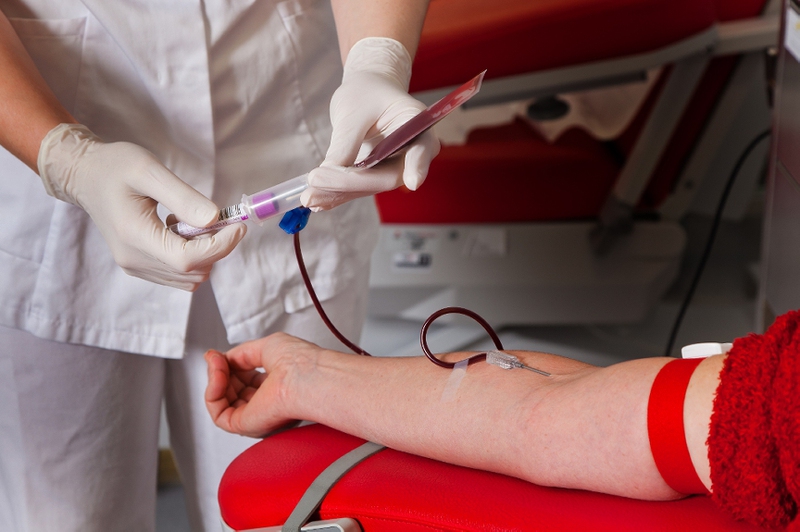Ferritin is a crucial protein in the body as it is the major place where iron is stored. This protein is shaped like a hollow sphere which allows a variable quantity of iron to enter for storage in the form of ferric hydroxide phosphate complexes. Measuring your ferritin levels indirectly measures the iron levels within the body. Doctors will typically recommend a ferritin test if he suspects you may have low ferritin, known as anemia, because of the presence of symptoms, such as chest pain, cold extremities, pale skin, weakness, dizziness and fatigue.
Ferritin Levels: What Is Normal?
Your doctor is able to determine your ferritin levels with a ferritin test. This needs to take venous blood like any other routine blood test and there isn’t any special preparation necessary for it. There is some variation between laboratories, but the normal ranges are typically as follows, measured in nanograms per milliliter:
Males: 12 to 300 ng/mL
Females: 12 to 150 ng/mL
What If You Have a Low Ferritin Level?
If you have low ferritin levels, this means that you suffer from an iron deficiency. It happens when your body doesn’t get enough iron and can’t produce enough hemoglobin which is the red blood cell component that lets them transport oxygen. As such, low ferritin leads to iron deficiency anemia. In the case of mild anemia, you may not notice any symptoms. In severe cases, you can experience a fast heartbeat, pale skin, dizziness, fatigue and/or shortness of breath.
How to Increase Ferritin Level
No matter the causes of low ferritin, you can increase your levels with supplements and iron-rich foods.
Iron-Rich Foods: If you are looking for the foods with the highest percentage of iron, opt for tofu, cocoa powder and dark chocolate, dark leafy greens, bran and cereals, whole grains, pulses and beans, lamb and beef, nuts, pumpkin and squash seeds, liver and mollusks. Simply add these items to your diet to wait for the good results.
Iron Inhibitors: There are phytochemicals and vitamins which naturally occur in food and can inhibit or enhance the body’s ability to absorb iron. According to the Academy of Nutrition and Dietetics, you should try to get vitamin C from vegetables and fruits as this improves iron absorption from your food. Additionally, they suggest you monitor foods rich in calcium as they may inhibit the body’s absorption of iron. Therefore, be careful of dairy, particularly that in cocoa, tea and coffee.
What If You Have a High Ferritin Level?
While low ferritin levels indicate anemia, high levels may indicate a disorder involving iron storage. One example would be hemochromatosis, in which the body absorbs too large a quantity of iron from food consumed. Additional possible causes of high ferritin levels include:
Porphyria (a disorder group due to an enzyme deficiency which affects the skin and nervous system)
Multiple blood transfusions
Hodgkin’s lymphoma
Leukemia
Type 2 diabetes
Hyperthyroidism
Liver disease
Chronic inflammatory disorders like rheumatoid arthritis
Typically, people with too much ferritin in their system will notice unpleasant symptoms, such as:
Unexplained fatigue
Joint pain
Unexplained weakness
Chest pains or heart palpitations
Stomach pain
In cases where your ferritin levels are higher than normal, your doctor may need to perform additional tests to determine the best course of treatment as well as the underlying cause.
How to Lower Ferritin Level
If your ferritin levels are too high, your doctor will recommend some course of action to lower them and reduce the risk of unpleasant symptoms. The following are simple methods that are recommended to help you.
Limit Iron Intake. You can reduce your iron intake by trying to eat less of foods with high quantities of this nutrient, like fortified bread or cereals, red meat, etc. Opt for supplements and vitamins that don’t have iron. You should also try to opt for unleavened bread produced using whole grain as the whole grain flour contains phytic acid, which binds with iron and prevents it from staying in your bloodstream. Phytic acid is also not present in bread with yeast.
Take Drugs. Drugs such as EDTA or desferrioxamine bind excess iron so it is removed from your bloodstream. If your doctor recommends these medications, they will monitor you carefully as these drugs can be toxic or dangerous if the instructions aren’t followed.
Donate Some Blood. Research has shown that donating blood multiple times a year will reduce the iron levels in your blood. You will want to have blood tests done before and after the donation to monitor the results and plan for future donations.



View All Comments /Add Comment